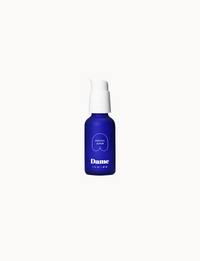When we experience trauma, society presents us with a false binary: We can either 'indulge' in that pain or 'get over it.'“Getting over it” is often code for ignoring injustice. But the wisdom of our bodies, and of the people — largely women and femmes of color — deeply engaged in healing work offer us a different framework. They don’t pressure survivors of trauma to ignore or simply push past trauma. Instead, they invite us to engage in an ongoing relationship with the way trauma lives in our bodies, to “engage with it,” says Peifer, and find ways “to make meaning and create.”
Trauma is Political
Trauma is the result of any experience in which the body registers a threat to our existence. That can be a literal near-death experience, like a car crash. It can also be any experience where the body registers a threat to selfhood, autonomy, or to our ability to access the material and community support we need to survive. For example, experiencing eviction, being repeatedly misgendered, or being in an emotionally abusive relationship. Conventional narratives of trauma describe it as a singular event to triumphantly overcome. But for most marginalized people, trauma is more complicated. It can be passed down, our ancestors’ trauma affecting the very expression of our DNA. Peifer says that’s the case for descendents of Holocaust survivors and African people whom Europeans enslaved. Trauma is interwoven in the mundane brutalities of our society, from the daily indignity of saddling children with school-lunch debt to privileged folks’ stigmatizing refusal to acknowledge unhoused people on the street. And trauma can result from one-time events that reflect ongoing patriarchal inequalities, such as a sexual assault. Peifer specializes in working with clients with complex PTSD. CTPSD often results from experiences of ongoing, pervasive trauma — for example, incarceration or living in abusive households as a child. Marginalized people, including LGBTQ people and people of color in the United States, may be especially likely to experience CPTSD due to lifetimes of discrimination. Discrimination forces marginalized people into a state of hypervigilance. “You have become so used to having to be aware of your race in spaces, or your gender in spaces, and wondering if you’re going to be discriminated against or hurt that it becomes your baseline normative,” says Peifer. “But on some level our body also knows that that’s not right – that you shouldn’t have to have that hypervigilance.” This tug of war between our inherent sense of dignity and our need to navigate inequality is deeply distressing — and political.Trauma Harms the Body
When something harms or alarms us, our bodies release a flood of stress hormones, including adrenaline, noradrenaline, and cortisol. Our heart rate and breathing speed up, and our muscles tense. We naturally enter a series of defensive responses that some psychologists call fight, flight, fawn, or freeze. These trauma responses are adaptive, meaning they evolved as our bodies’ attempts to keep us safe. A higher heart rate circulates oxygen to our muscles, readying our ancient ancestors to, say, fight off a carnivorous animal. Faster breathing prepared them to flee from, for example, an oncoming natural disaster. Freezing, like a deer in the headlights, may have encouraged a threatening person or animal to ignore them. And fawning – trying to seem cute and inoffensive — may have pacified a potential aggressor. Our bodies respond with fight, flight, freeze, or fawn reactions when faced with trauma in the modern world. For example, many sexual violence survivors report freezing during assaults. And I, like many intimate partner violence survivors, am achingly familiar with fawning to try to appease someone who is harming me. Yet in the contemporary United States, marginalized people – particularly people who are Black, Indigenous, transgender, and living in poverty – are criminalized for their bodies’ normal and understandable self-protection. For example, up to 94% of incarcerated women in some prisons have experienced sexual and domestic violence victimization, and many women and femmes are incarcerated for fighting back against their abusers. Of course, fighting back is a totally understandable response to an attack.While our trauma responses protect us in the moment, ongoing trauma harms the body.“It changes the way that your body reacts and feels,” says Peifer. It can leave us in a perpetual state of hypervigilance, meaning we may perceive innocuous sounds or movements as threats. It can cause us to dissociate, or disconnect from our bodies and feelings, making it more difficult to experience intimate relationships. Trauma from sexual and intimate partner violence can cause survivors to dissociate during sex. Research has found that folks who have experienced trauma in early childhood are at higher risk of heart disease, cancer, suicide, and more. The U.S. medical system has historically blamed these diseases on personal choices, say in diet. Yet societal factors play a huge role. Researchers have found that ongoing and historical trauma is likely one of the reasons Indigneous Americans have a high rate of type two diabetes. Similarly, gay men, bisexual women, and trans folks of all genders and orientations are more likely to experience high blood pressure, probably related to chronic stress. If you’ve experienced trauma, it can understandably feel daunting to hear about these negative effects. It doesn’t make you “weak” to mourn the way trauma has harmed your body and community. Actually, that’s a sign that you’re working through something important.




















































